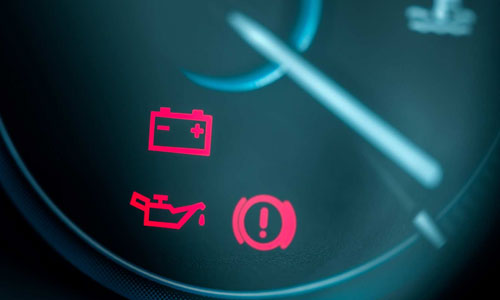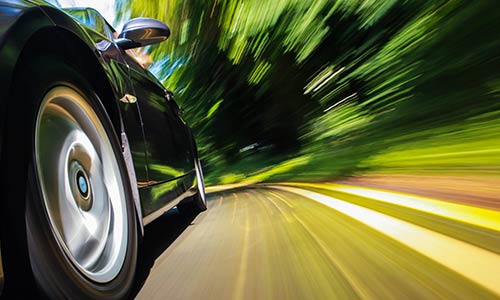Different types of speed cameras on UK roads
30 second car valuation
Gatso speed camera
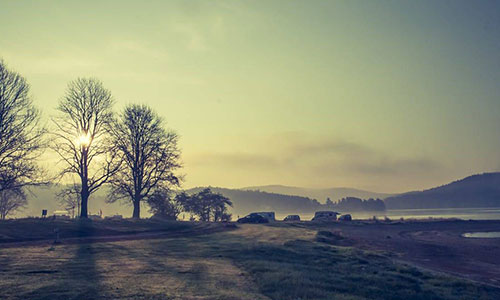
The Gatsometer Type 24 was the original speed camera introduced to Britain in the 1990s and they’re still visible across the country, although the original units are slowly being replaced by newer technology. The original square yellow boxes use film, which means that operators had to constantly check whether they were functioning.
In 2007, Gastometer introduced a new type of speed camera, named Digital Gastos that are becoming more widespread. The primary advantage is that they use digital images rather than film, meaning they’re always active and don’t need to be regularly checked by local councils.
Gasto speed cameras are always rear-facing and use radar technology that triggers the camera to take two photos in quick succession. The flash illuminates the number plate on the vehicle, as well as the white lines on the road surface that can be used to prove the driver was speeding.
Whilst Gatso speed cameras are effective in catching motorists speeding, the fact that they’re rear-facing means that they fail to capture an image of the person who is driving the car at the time of the offence. This may allow motorists to dispute the fact that they were driving the car at the time in an attempt to avoid being convicted.
Truvelo Combi Forward Facing camera
The forward-facing Truvelo Combi camera is becoming more common on our roads. The cameras use infra-red technology and don’t flash like Gatso speed cameras do. They use four sensors that are hidden on the surface of the road that calculates how fast a car is moving. You will also notice that there are three white lines in the road where Truvelo Combi cameras are fixed, which are used to help calculate the speed of a vehicle.
Truvelo D-Cam speed camera
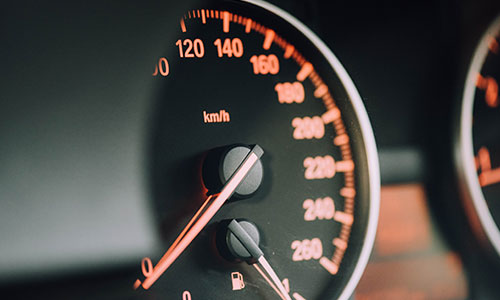
Introduced in 2013, the Turuvelo D-Cam (short for digital camera) can be installed both in central reservations and at the side of the road to catch speeding motorists. The cameras can be installed both forward and rear-facing, making them the ideal replacement for outdated Gatsos.
Advanced technology means that Truvelo D-Cam’s can also be used to catch motorists going through red lights and can monitor up to 3 lanes of traffic at once.
Traffic light cameras: A complete guide
Similarly to the Truvelo Forward Facing camera, the D-Cam uses sensors on the road’s surface to calculate the speed of a vehicle, and if it’s deemed to be going over the speed limit, uses an infra-red camera to take a photo of the vehicle. As a secondary method, the camera can use a laser beam to measure the speed of oncoming vehicles which triggers the camera if the motorist is speeding.
SpeedCurb speed camera
The SpeedCurb camera can be used to monitor both traffic light and speeding offences, although the most common use is to catch speeding motorists.
They are the tallest standing rear-facing cameras and use sensors that are embedded into the road surface to measure the speed a vehicle is travelling. It is also possible to mount twin head SpeedCurb’s on a single mount, which allows councils to monitor up to two lanes of traffic in either direction simultaneously.
HADECS 3 speed camera

HADECS 3 cameras are often found on smart motorways and are amongst the most advanced speed cameras in operation. They can be found either mounted overhead or on poles at the side of the road. They communicate with the speed limit displayed on the overhead monitors where there’s a variable speed limit in place to catch those breaking the law.
Unlike most cameras, they aren’t all painted in yellow, making some difficult to spot. They’re able to monitor up to 5 lanes of traffic at a single time, with lane identification, owner identification and vehicle position collected using radar detection.
REDFLEX speed cameras
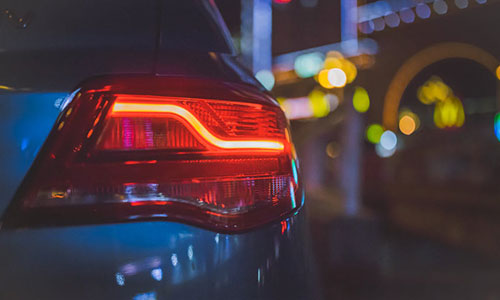
There are two types of REDFLEX speed cameras that have recently been approved by the Home Office. REDFLEXred which will be used for catching motorists driving through red lights and speeding through green lights, and REDFLEXspeed that will catch motorists speeding on motorways that can monitor up to 6 lanes of traffic at a single time.
The cameras have an 11-megapixel camera built-in to capture high-resolution images of motorists that are driving over the speed limit. The camera can take photos simultaneously meaning that multiple offences occurring at the same time can still be caught.
Long ranger camera
The long ranger speed camera has been trialled by Gloucestershire Police since November 2018 in 35 sites and is one of the latest advances in speed camera technology. The cameras have an impressive range and can capture speeding motorists from 1000 meters away.
As well as being used to catch motorists that are speeding, they can also be used to catch middle-lane hoggers, people not wearing a seatbelt, those using a mobile phone behind the wheel, and tailgaters.
VECTOR average speed camera
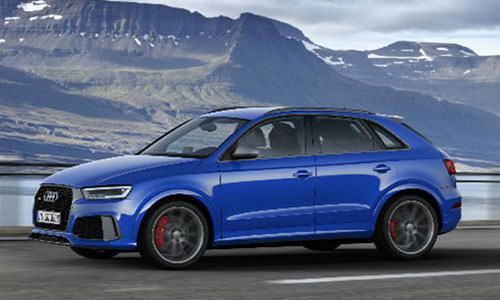
VECTOR average speed cameras can be used to monitor bus lanes, traffic lights and the average speed of motorists using Automatic Number Plate Recognition (ANPR) technology.
The camera works by identifying a vehicle entering and exiting a specified stretch of road, before calculating the average speed it’s travelling. They can monitor up to two lanes of traffic at a single time, and traffic flowing in opposite directions. An advantage of VECTOR cameras is that they can operate in all weather conditions, meaning drivers can still be caught breaking the law in poor visibility.
SPECS average speed camera
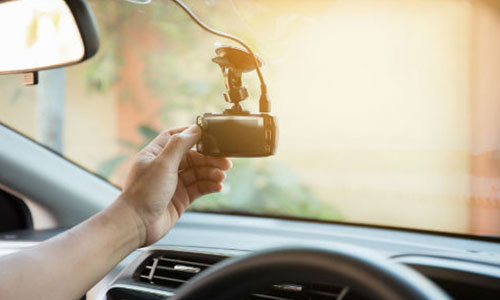
SPECS cameras use ANPR technology to measure the average speed a motorist is travelling over a specific distance. They were one of the earliest versions of average speed cameras used in the UK after getting approval for public use in 1999.
SPECS average speed cameras are fitted overhead and use infra-red technology to monitor vehicles. They can be installed to measure the speed of vehicles across at least two lanes over distances between 75m and 20km. If you are caught speeding by a SPECS camera, you will be sent a ticket via post as the ANPR provides information on the vehicle and the registered owner.
Siemens SafeZone average speed camera
You are most likely to find Siemens SafeZone speed cameras in urban areas such as towns, cities and villages, where there is a low speed limit in place. Similarly to other average speed cameras, they use ANPR technology to catch speeding motorists by measuring the speed that a car has travelled between two locations.
The cameras are much more difficult to spot than some of the others in this article, as they can be easily fitted to existing infrastructure, such as posts and bridges. There are instances where two cameras are mounted, which allows councils to catch motorists travelling in both directions.
SpeedSpike average speed camera

One of the latest speed cameras to be used on UK roads is the SpeedSpike average speed camera. It works in a similar way to SPECS, measuring speed over a certain distance and uses ANPR to track when a car passes a specific location and uses this to calculate the average speed.
However, SpeedSpike is different from other average speed cameras as the manufacturer claims that the data from over 1,000 cameras can be linked together to provide automatic enforcement for those breaking the law. It is expected that they’ll be rolled out across the country if they’re a success after more trials are conducted throughout Hampshire this year.
Mobile speed cameras
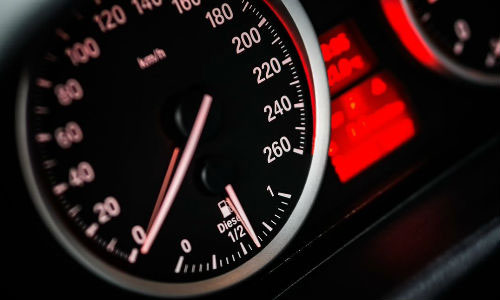
Mobile speed cameras are still common across the UK, appearing in sites that can change on a daily basis. The mobile cameras are usually operated from police vehicles and include laser guns, radar guns, speedometers and mini Gatso cameras.
Mobile speed cameras need to be operated from an individual within the vehicle and some cameras (DS2) can only be used where the technology on the road is available.
DS2 speed cameras
DS2 speed cameras are semi-permanent devices that can catch speeding motorists over two lanes of traffic in opposite directions. They can be both manned or left unattended to be effective.
The DS2 camera can only work where there are three piezo strips on top of, or embedded in the road’s surface. As a vehicle travels over the lines on the road, the camera will calculate the vehicle’s speed. If you are caught speeding by a DS2 camera, you will either be found guilty based on video evidence, or a police car will be operating further up the road, which will stop the driver.
Related articles
What our customers think



